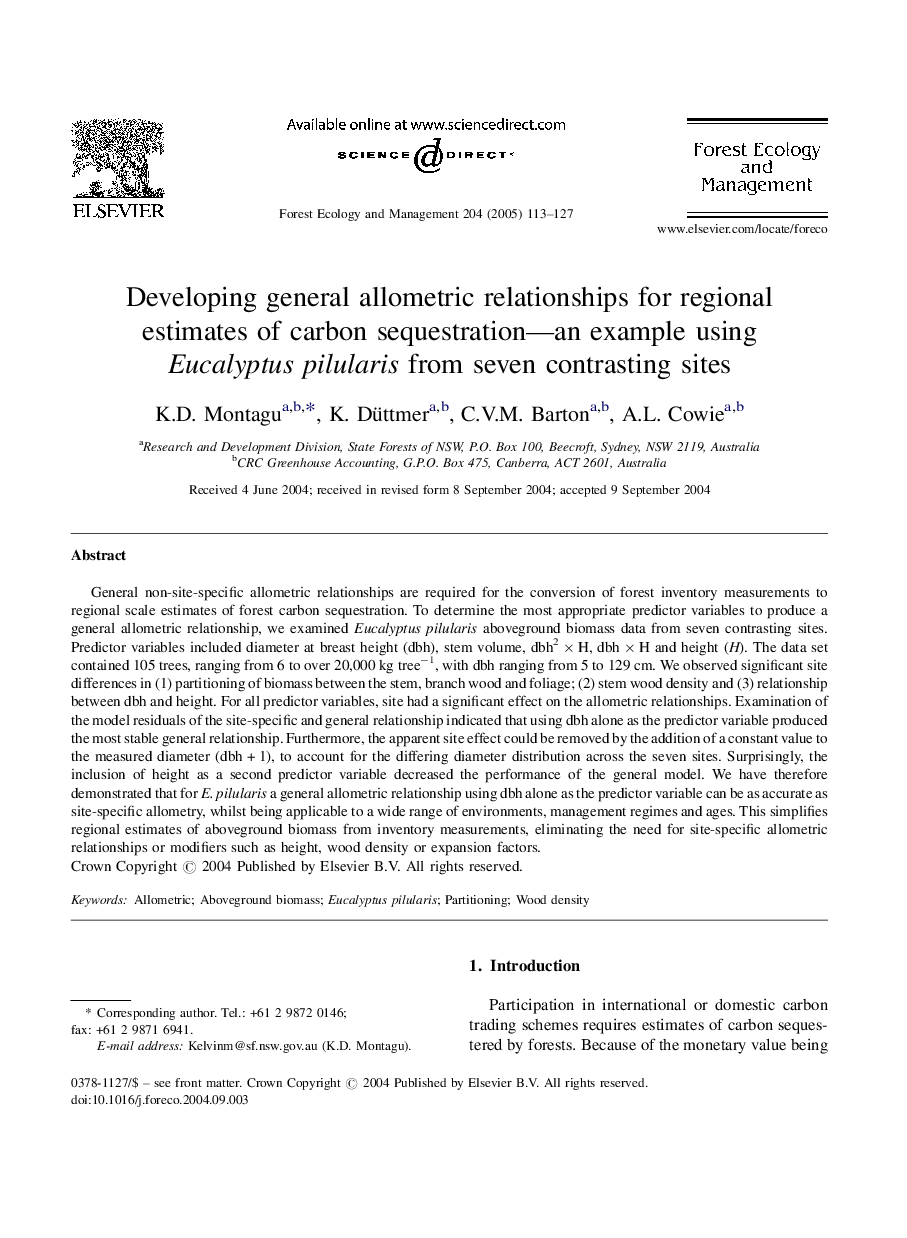| کد مقاله | کد نشریه | سال انتشار | مقاله انگلیسی | نسخه تمام متن |
|---|---|---|---|---|
| 10250672 | 159390 | 2005 | 15 صفحه PDF | دانلود رایگان |
عنوان انگلیسی مقاله ISI
Developing general allometric relationships for regional estimates of carbon sequestration-an example using Eucalyptus pilularis from seven contrasting sites
دانلود مقاله + سفارش ترجمه
دانلود مقاله ISI انگلیسی
رایگان برای ایرانیان
کلمات کلیدی
موضوعات مرتبط
علوم زیستی و بیوفناوری
علوم کشاورزی و بیولوژیک
بوم شناسی، تکامل، رفتار و سامانه شناسی
پیش نمایش صفحه اول مقاله

چکیده انگلیسی
General non-site-specific allometric relationships are required for the conversion of forest inventory measurements to regional scale estimates of forest carbon sequestration. To determine the most appropriate predictor variables to produce a general allometric relationship, we examined Eucalyptus pilularis aboveground biomass data from seven contrasting sites. Predictor variables included diameter at breast height (dbh), stem volume, dbh2 Ã H, dbh Ã H and height (H). The data set contained 105 trees, ranging from 6 to over 20,000 kg treeâ1, with dbh ranging from 5 to 129 cm. We observed significant site differences in (1) partitioning of biomass between the stem, branch wood and foliage; (2) stem wood density and (3) relationship between dbh and height. For all predictor variables, site had a significant effect on the allometric relationships. Examination of the model residuals of the site-specific and general relationship indicated that using dbh alone as the predictor variable produced the most stable general relationship. Furthermore, the apparent site effect could be removed by the addition of a constant value to the measured diameter (dbh + 1), to account for the differing diameter distribution across the seven sites. Surprisingly, the inclusion of height as a second predictor variable decreased the performance of the general model. We have therefore demonstrated that for E. pilularis a general allometric relationship using dbh alone as the predictor variable can be as accurate as site-specific allometry, whilst being applicable to a wide range of environments, management regimes and ages. This simplifies regional estimates of aboveground biomass from inventory measurements, eliminating the need for site-specific allometric relationships or modifiers such as height, wood density or expansion factors.
ناشر
Database: Elsevier - ScienceDirect (ساینس دایرکت)
Journal: Forest Ecology and Management - Volume 204, Issue 1, 3 January 2005, Pages 115-129
Journal: Forest Ecology and Management - Volume 204, Issue 1, 3 January 2005, Pages 115-129
نویسندگان
K.D. Montagu, K. Düttmer, C.V.M. Barton, A.L. Cowie,